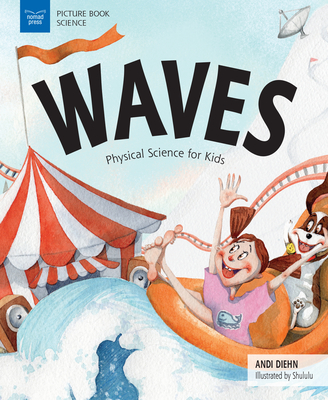
Have you ever floated on waves in the ocean? Have you ever stood in a human wave at a baseball game?
Waves are all around us! You can find waves in a field of wheat, in a dangling string, in a slinky, and in flags that are blowing in the breeze. There are even invisible waves! Sunlight and sound move in waves, and cell phones and microwaves use waves to transmit voices and to cook food. You can hear your mom say, "Hello," on the cell phone because of waves.
Waves: Physical Science for Kids is a fun, illustrated introduction to the concept of waves and energy and their presence in our world. In this nonfiction picture book, elementary school children learn to spot all the different kinds of waves they encounter in daily life by finding real-world science connections. Simple vocabulary, detailed illustrations, easy science experiments, and a glossary all support exciting learning for kids ages 5 to 8. Perfect for beginner readers or as a read aloud nonfiction picture book!
Part of a set of four books in a series called Picture Book Science that tackles different kinds of physical science (waves, forces, energy, and matter), Waves: Physical Science for Kids pairs beautiful illustrations with simple observations and explanations. Quick STEM activities such as floating a ball in a tub of water help readers cross the bridge from conceptual to experiential learning and provide a foundation of knowledge that will prove invaluable as kids progress in their science education.
Perfect for children who love to ask, "Why?" about the world around them, Waves satisfies curiosity while encouraging student-led learning.
Picture Book Science presents real-world examples of physical science and engineering topics kids find fascinating! These nonfiction picture books consist of engaging narratives paired with brightly colored, whimsical illustrations drawn by an accomplished scientist. With these books, readers ages 5 to 8 are encouraged to expand their definitions of the words "force," "matter," "energy," and "wave." Elementary-aged children are equipped to recognize basic science concepts and identify the different ways they are demonstrated in real life, while being impressed with the idea that science is a constant part of our lives and not limited to classrooms and laboratories.Titles in the series include: Waves; Forces; Matter; and Energy.







